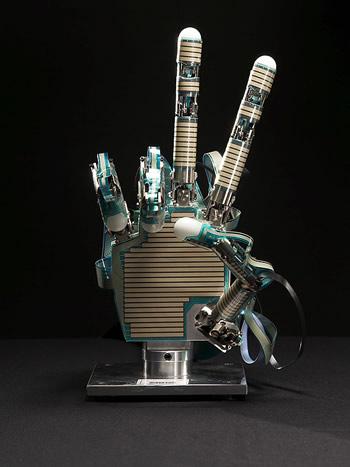
Nesuphyn posted a news item in the meatspace about a cybernetic hand developed in Japan by Yukiyasu Kamitani and colleagues from the ATR Computational Neuroscience Laboratories in Kyoto, and researchers from the Honda Research Institute in Saitama, that is controlled by taking recordings of someone’s brain while attempting to move their own hand.
The robotic hand mimics the movements of a person’s real hand, based on real-time functional magnetic resonance imaging (fMRI) of their brain activity. It marks another landmark in the advance towards prosthetics and computers that can be operating by thought alone…
Subjects lay inside an MRI scanner and were asked to make “rock, paper, scissor” shapes with their right hand. As they did this, the MRI scanner recorded brain activity during the formation of each shape and fed this data to a connected computer. After a short training period, the computer was able to recognise the brain activity associated with each shape and command the robotic appendage do the same…
This is pretty damn cool. Just in terms of “just so” type information, this means that the researchers can identify the messages the brain generates to move body parts. This in itself is pretty darn impressive. That this can be captured and fed into a remote hand really opens up some interesting possibilities. People who have lost limbs can potentially communicate with the future cybernetic limbs just as they did their real ones.

More interesting from a cyberpunked future standpoint is the idea that at some point, we could have the capability to have remote limbs that we control wirelessly through thought. This significantly alters the invasive notion of cyborgs that we’ve become accustomed to. Versus requiring direct implants connected to the brain, we could have an ultra-high speed recording device that is linked to a remote flying hand. For some reason, the “Love Glove” from the Beatles’ Yellow Submarine comes to mind - just imagine having that thing!
One day, Kamitani believes, the robot hand could be made to respond faster than a user’s real one. “The next step for me is to decode faster, even before the person moves their hand, by reading the brain activity related to intention,” he told New Scientist.
But he admits that fMRI scanning technology must be improved dramatically before this could be possible, and before the system could be used practically. “We will need several breakthroughs in related technologies, including those for brain scanning hardware, before this type of non-invasive systems will be used in daily life,” he says.
Our cyberpunked future is looking more interesting every day!
This post has been filed under News as Cyberpunk by SFAM.
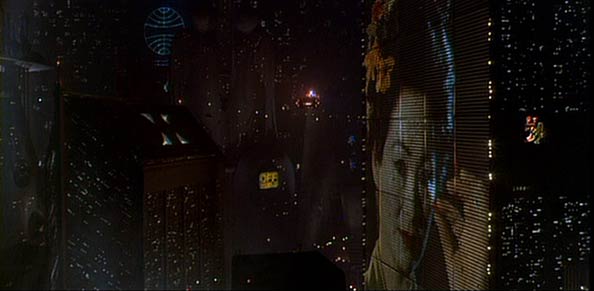
Neuromancer posted in the meatspace that Scifi.com is reporting that all the legal issues have been cleared up for Ridley Scott to finalize his work on a definitive version of Blade Runner.
Warner Home Video will issue a new remastered director’s cut of the classic SF movie Blade Runner in September now that it has cleared up rights issues, followed by a theatrical release of a version promised to be truly director Ridley Scott’s final cut, Variety reported. Warner’s rights to Blade Runner lapsed a year ago, but the studio has since negotiated a long-term license.
The movie has a troubled history. When Scott ran over budget, completion bond guarantors took control of it and made substantial changes before its 1982 theatrical release, adding a voice-over and a happy ending. That version was replaced by the much better-received director’s cut in 1992, but Scott has long been unhappy with it, complaining that he was rushed and unable to give it proper attention.
Scott started working on the final cut version in 2000, but that project was shelved by Warner soon after, apparently because the studio couldn’t come to terms with Jerry Perenchio over rights issues.
The restored “director’s cut” will debut on home video in September and will remain on sale for only four months, after which time it will be placed on moratorium. Blade Runner: Final Cut will arrive in 2007 for a limited 25th-anniversary theatrical run, followed by a special-edition DVD with the three previous versions offered as alternate viewing. Besides the original theatrical version and director’s cut, the expanded international theatrical cut will be included. The set will also contain additional bonus materials.
We’ve had so many stops and starts with this that it almost seems too good to be true. I doubt I’ll be able to wait on the remastered version of the Directors’ Cut either, as the current Blade Runner DVD quality is far from good. Personally though, I’m really hoping for a nice featurette in the 2007 version detailing Blade Runner’s enormous influence on the genre.
This post has been filed under Upcoming Movies by SFAM.
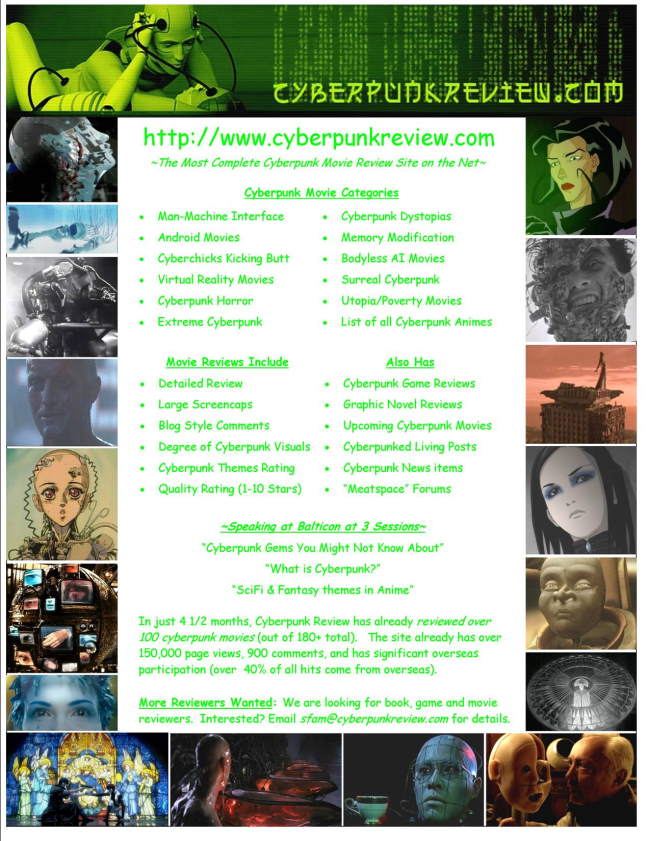
Sorry for the lack of updates recently; I was preparing for a local Con. I had a great time speaking at Balticon this weekend. While the organization was a complete zoo, and my main session (Hidden Cyberpunk Gems in Film) was opposite against a kickin Browncoat play and terrific Gene Wolfe session, it was still a blast. The Gems session eventually got close to 20 people. A few came up afterwards and mentioned this was their favorite session of the whole event - another mentioned she might have a potential interested reviewer. In any event, I enjoyed this enough I probably want to look into doing similar events.
In doing the sessions, especially the anime themes one, I’m more convinced than ever that some of these wonderful animes and films sorely need publicity. There are some absolutely terrific stories that people that aren’t getting in front of those who would be REALLY interested to know about them. This really has become one of the primary goals of Cyberpunk Review. I really do believe I’ve helped expose people to truly interesting films that otherwise would have never gotten in front of them. In that same vein, I TRULY appreciate all the regulars here who are constantly exposing ME to previously hidden cyberpunk films. At one time I thought there was only about 120 cyberpunk anime and films. Now the number is hovering around 180 and rising. Keep them coming!
BTW - has any one seen all these movies in the brocure? If not, I’m guessing at least a few of you can identify all the pictures.
This post has been filed under Site Development by SFAM.
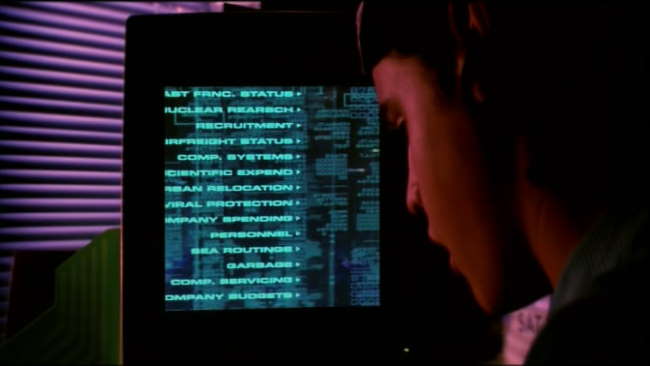
Mr. Roboto, the newest member of the our Meatspace forums found this interesting tidbit. A lawsuit filed Wednesday by Valence Media, the parent company of Torrenspy, accuses the Motion Picture Association of America (MPAA) of hiring a hacker to steal information from a company that the MPAA has accused of helping copyright violators. There are many sources for this now, but ZDNet states the following:
Torrentspy’s complaint includes claims that the man whom the MPAA allegedly paid $15,000 to steal e-mail correspondence and trade secrets has admitted his role in the plot and is cooperating with the company.
“It is a Hollywood drama, what happened here,” Ira Rothken, Torrentspy’s attorney, said in a telephone interview Wednesday evening.
The allegations come three months after the MPAA filed suit against Torrentspy and other directories for allegedly making it easier for pirates to distribute movies over the Internet.
The MPAA of course denies everything, saying this is just a poor diversion attempt:
“These claims (by Torrentspy) are false,” Kori Bernards, the MPAA’s vice president of corporate communications, said in an e-mail to CNET News.com. “Torrentspy is trying to obscure the facts to hide the fact that they are facilitating thievery. We are confident that our lawsuit against them will be successful because the law is on our side.”
Truly, I find it hard to believe that the MPAA would take such a risky move as this. I wouldn’t be at all surprised if this weren’t all just the bunk they say it is. Then again, corporations have been known to do some pretty stupid things over the years. What say you all - does this sound like the truth or just innovative lawyering tactics?
This post has been filed under News as Cyberpunk by SFAM.
Movie Review By: SFAM
Year: 1985
Directed by: Terry Gilliam
Written by: Terry Gilliam, Tom Stoppard & Charles McKeown
IMDB Reference
Degree of Cyberpunk Visuals: High
Correlation to Cyberpunk Themes: High
Key Cast Members:
Sam Lowry: Jonathan Pryce
Jill Layton: Kim Greist
Archibald ‘Harry’ Tuttle: Robert De Niro
Mrs. Ida Lowry: Katherine Helmond
Michael Palin: Jack Lint
Spoor: Bob Hoskins
Mr. M. Kurtzmann: Ian Holm
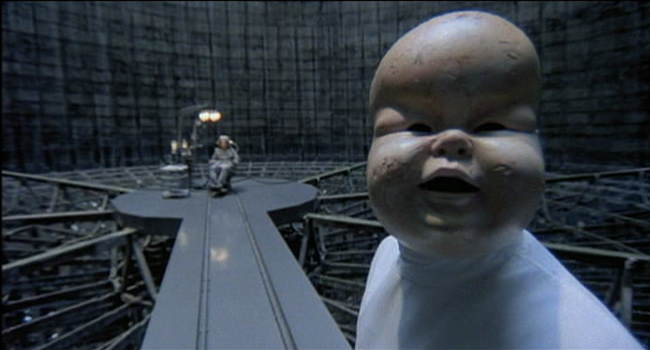
Overview: Terry Gilliam describes Brazil as “Franz Kafka meets Walter Middy” - this sort of fits. Using the name of Arry Barroso’s 1930s escapist song, Brazil is set in a nightmarish, fantasized dystopic future, Gilliam gives us a story about humanity attempting to escape reality by retreating into one’s own dreams. This is all the more interesting given the enormous fights Terry Gilliam had to engage in with Universal to even get the picture (in a non-bastardized form) released. Brazil is a visual and thematic tour-de-force which deserves a watch by all who are interested in having movies provoke deep thoughts, long after the film has concluded.

The Setting: Brazil takes place in a fantasized dystopic future where runaway, controlling, technocratic bureaucracy that has invaded all aspects of daily life. Arcane forms with incoherent instructions are required to do anything, but the goal is always completeness and finality over actual results. Appearances are everything in Brazil – actual human relationships are a luxury most do without. Humans survive in this world by keeping their “real” selves bottled up inside as a cocoon, while overtly they serve their role as a specific cog in the system. Keep the desk clean, the expensive suit pressed and your family looking perfect and you’ll be alright. Continually we see non-human responses to horrific disasters. In one restaurant scene, half the patrons have been blown up by a bomb, but the maître d’ is far more concerned with hiding the destruction from his elite patrons by erecting a pleasant backdrop than he is in helping those horribly injured.
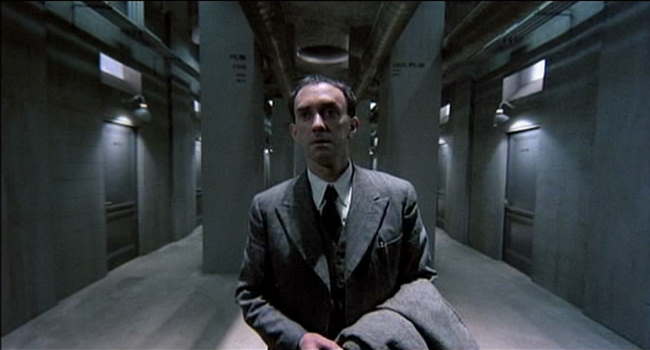
The Story: Sam Lowry (played wonderfully by Jonathan Pryce), our hero, from the beginning adapts to the system, but separates his “true” self in his dreams. Sam works as a minor cog in a the massively large bureaucracy called the Ministry of Information. The Ministry of Information eats up 7% of the total GDP in its pursuit of society’s subversive elements, including the terrorists, who randomly bomb the rich and wealthy throughout the movie. Even though Sam comes from a prominent family with connections, he wants nothing to do with career advancement. Sam long ago gave up aspirations, and only wants to get through life unnoticed - until the love of his dream life appears in the real world. Sam throws everything else aside in order to meet up with this chick, but unfortunately, the “system” and even his own preconceptions continually get in the way. As the story unfolds, we see the bureaucracy in action in what becomes a struggle of freedom and individuality against the technological domination of humanity.

The Visuals: Brazil is a visually powerful movie. In its more sedate moments, Brazil starts off as a noir-ish style setting with 40s style suits and hats, tall squared buildings, computers driven by typewriters and dark lighting from above. But very quickly, Brazil changes to a surreal experience, which shoes converted to hats, ventilation pipes dominating every roomscape, and massive expansive buildings without ground floors. Ventilation pipes are Gilliam’s symbol for technology run rampant. Massively tall buildings are symbols for bureaucratic power. Throughout, dark gray is the dominating color. Visually, the world of Brazil is decidedly bleak – more bleak in fact than humanity can overcome.

The Sound: Brazil’s score fully encapsulates the ambiance that Gilliam is expressing. We have high flowing orchestral pieces, cheesy, squeaky monophone songs, marches that integrate type-writers as the rhythm section, and all sorts of diversity that captures the quirky, bittersweet feel that Brazil often conveys. The continually harsh, metallic sound FX also highten the ambiance. What we are left with is a wonderful meshing of visuals and sound as a backdrop for the wonderful performances throughout.
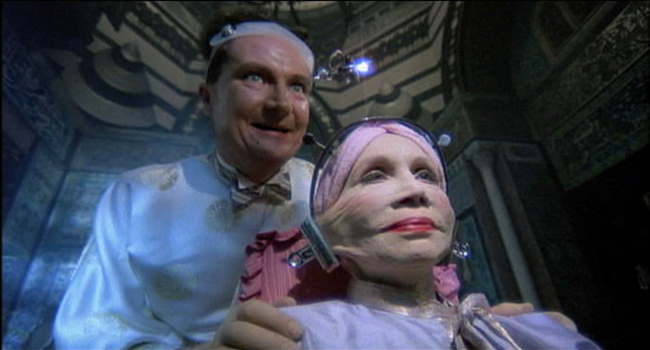
The Cast: One of Gilliam’s real skills in Brazil is taking an extremely large cast, filled with potentially interesting roles, and making them all meaningful. Continually, Brazil provides us a stream of totally interesting role players that add to the quirky universe that is this fantasized future. Robert De Niro is terrific as Harry Tuttle, a heat engineer-turned anarchist revolutionary. Michael Palin plays a terrific best friend and torturer, and Katherin Helmond plays a totally wierd, excentric but powerful mother. There are a number of other unique roles, including Ian Holm who plays a terrific cowardly, conniving boss, and Bob Hoskins as a slighted and crazed heat engineer. Jonathan Pryce is absolutely superb as the lead, and Kim Greist plays an interesting counter-point love interest. All in all, the roles come across as entirely memorable.
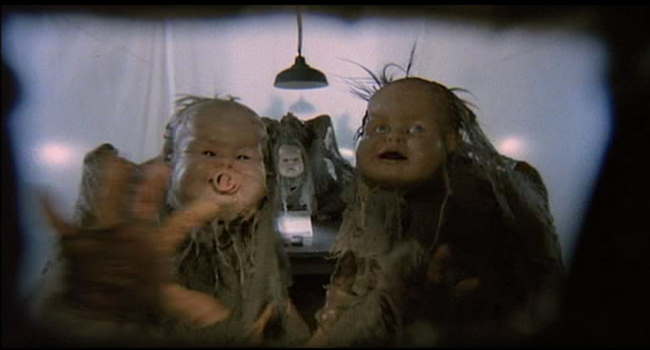
Dream Trapped Inside of a Nightmare: On the “Making of” segment of the Criterion Edition, Brazil is described as a dream trapped inside of a nightmare by star Jonathan Pryce. Pryce’s character, Sam Lowry, dreams the ultimate dream of happiness. In his dream, he is a fantasy warrior with angel wings who fights the denizens of the deep to rescue his idealized damsel in distress. In reality though, every aspect of his life is a nightmare. The “system” that is the bureaucracy, in an attempt to root out the terrorists, has extended its omnipresent tentacles into every aspect of life. At best, Lowry’s idealized reality involves being un-noticed by anyone. Unfortunately, once he discovers his idealized mate in real life, he can no longer remain obscure. He risks everything in a failed attempt to transform his dream into reality. In the end, Brazil shows how the depths of humanity can be crushed in a dystopic future where individuality and human rights become completely subservient to societal “welfare.”
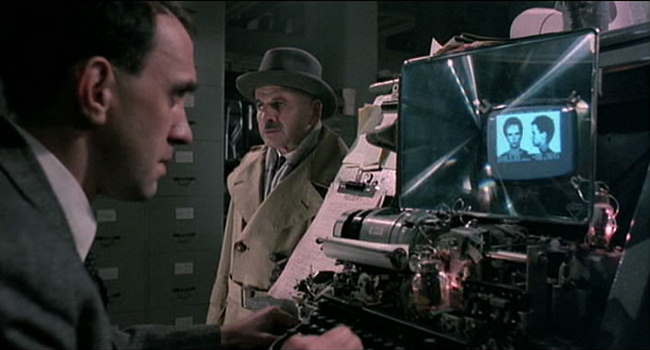
Use of Information: In Brazil, the collection and storage of information is paramount. While Brazil takes place in a dystopic future, computers have never advanced past arcane mainframes. The notion of usability, or people-centric computing is an anathema to the world of Brazil. The horror of horrors for the bureaucracy is finding a piece of paper without a home, or even worse, acknowledging that the “mistake” that caused this out of place paper belongs in your department! In Brazil, the fact that a person dies and a family is destroyed by this paperwork glitch is completely beside the point. In fact, the Samurai warrior character (see below) that Lowry fights in his dreams is fully comprised of computer parts – information and computers are indeed the ultimate evil for humanity.
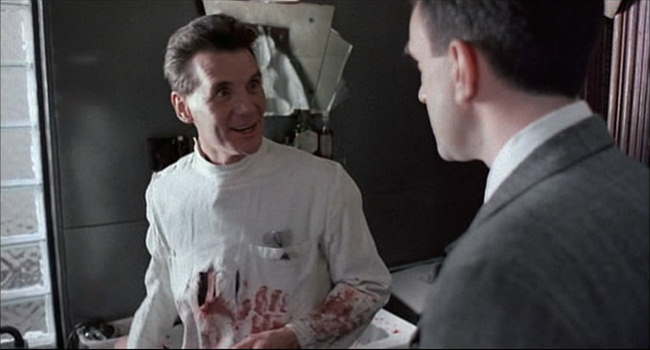
Terror As a Means of Extracting Information: One of the really interesting notions in Brazil that resonates today is the idea that the government engages in torture as a means of extracting information about potential terrorists. The throwaway comments from Sam, who has bought into this world, indicates that the choice HAS to be between this invasive government and sheer anarchy. When brought to the level of the individual, one has the sense that little by little, the government in Brazil slowly invaded individual freedoms as a way of combating the terrorists. The clear impression though is one of ever escalating acts – as the government becomes more invasive, the anarchic responses become more extravagant. De Niro’s character, the heroic anarchist heating engineer, represents this history of society, and humanity’s ultimate response.
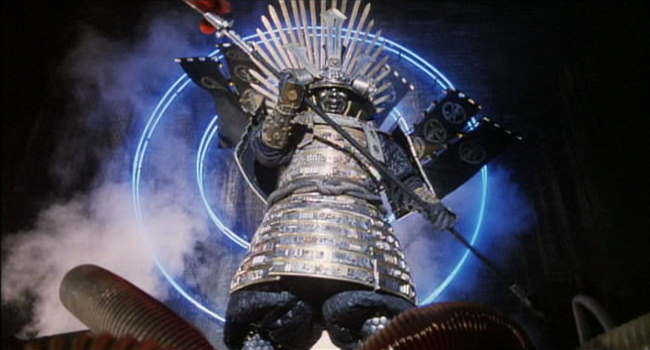
Is Brazil Cyberpunk? Due to the fantasy elements we see in Brazil, it’s hard to refer to it as a straight cyberpunk movie. While the dream sequences aren’t an issue, the dystopic future clearly isn’t supposed to represent an actual near-term future – it’s a fantasized version of issues currently playing out in society today. Still, the message of invasive technology and dominating totalitarian control destroying humanity is rarely done better than we see in Brazil. And while Brazil is wonderfully quirky, it’s the ending that truly feels like a cyberpunk film. Here we get both common cyberpunk visuals and philosophy in every sense of the word. The ending especially mimics many other cyberpunk films, where…
[SPOILERS – HIGHLIGHT THE TEXT TO SEE]
Throughout the last half of the film, Sam’s perception of reality becomes more and more governed by perceptions from his dream world. His actions leading to his final arrest are based on a perceptual mix of fantasy with reality. At the end, Sam is seems to make the conscious choice to disavow the real world in favor of his internally constructed fantasy. In this sense, Sam has finally attained the freedom he long sought after. Interestingly, a very similar approach is also used at the end of Save the Green Planet.
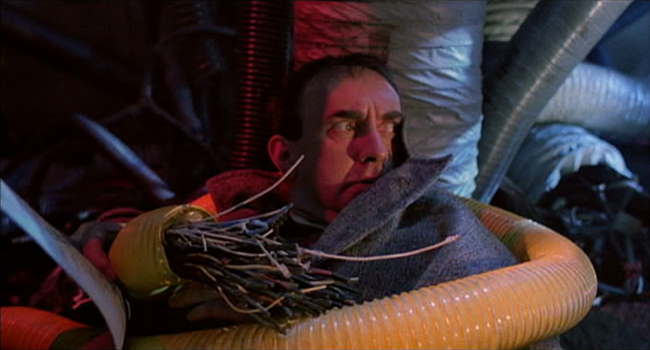
The Bottom Line: The world of Brazil is steeped in a runaway, controlling, technocratic bureaucracy that has its tentacles in every part of humanity. The ducts dominate every room, including the family household living room at the beginning. To humanity, the message is clear – “Your actual lives must be adapted to suit OUR needs, not yours; freedom now only exists in your own dreams.” In the end we are shown the myth of a free man in a tightly controlled society – the only freedom we ultimately possess is within our own perceptions – that is the only source where salvation can be found. Visually, Brazil is simply stunning. The story is incredibly creative, the acting is great (especially De Niro and Pryce) and the dialogue is terrific. Furthermore, your Gilliam’s wonderful sense of humor seeps out of every pore in this movie - such as the notion that the information retrieval department never retrieves any information. In short, Brazil is movie worthy of high praise.
Go to Page 2 for More Screencaps–>
~See movies similar to this one~

PC Magazine has a wonderful article on MIT Media Lab’s RadioActive phones. These phones allow their owners to do podcasts directly through the phone which is then uploaded into a pretty slick site that adds metadata to it, associating the podcast to all potentially interesting connections.
By and large, more people are turning to their mobile devices for entertainment, says Donath, but rather than call, and potentially annoy, a friend, it would be ideal to “conveniently drop into an [ongoing] discussion and drop out when you’re done.”
…The RadioActive project, which Donath (MIT) created with student Aaron Zinman, defines a large-scale asynchronous audio messaging system, or mobile audio forum. In this system, voice messages, which are short audio sound bytes, are exchanged between groups of users via mobile devices, like cell phones or PDAs, as a method of “discussion-on-demand.”
…Just like an email application or an RSS reader, RadioActive supplies its users with an inbox, which displays the first message of discussion threads that have been subscribed to or are contextually relevant. For instance, location may be one factor the system takes into account when determining contextual relevance. In this scenario, threads relating to New York City restaurants may appear in the inbox as the user walks around Manhattan.
While this functionality in itself is pretty interesting, the thought that occurs to me is that this is just another step in a societal change where we know where everyone is at all times and where all communications are potentially monitored. Paranoid parents already have the ability to keep tabs on their children 24/7; now a jilted lover has to worry about the possibility of his or her significant other secretly “podcasting” their breakup discussion because this would be so dramatic that it would be a surefire hits generator on whatever the hot social networking site was at the moment.
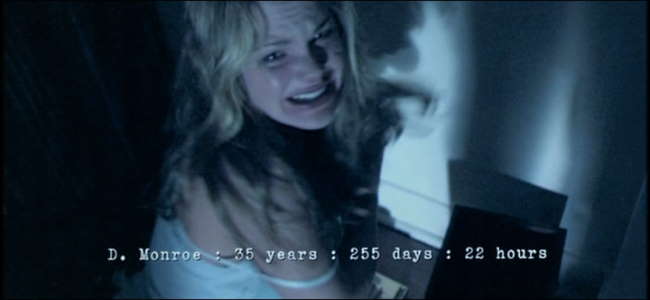
The trend is clear: reality shows and social software technologies are transforming you an I into the stars of the modern media age. Our movie stars are quickly losing their sacred pedestal as the voice and face of society. The societal actors are becoming the nameless many, who now can make a name for themselves by podcasting the latest bizarre incident in their lives for all to see. Yes, as the article suggests, we can use the podcasts to immediately broadcast to Manhattan that our crab cakes at Crabs-R-Us contained too much filler, but over time, the game show host mentality will take over. Then the question facing society will not be too dissimilar from the question explored in Final Cut: how will people act when they know that potentally all their interactions are being recorded for others’ consumption?
Andy Warhol’s 15 minutes of fame is based on the presupposition that there was an agreed-upon, discrete stage. In the cyberpunked present, our 15 minutes of fame has been converted into a potential 24 hour-a-day fame on one of a bazillion media outlets. Every interactive website is now in direct competition with cable & network TV. We all compete for your attention. To the extent you participate, you become part of the new internet reality shows. So “podcast away” ladies and gents!
This post has been filed under Cyberpunked living, News as Cyberpunk by SFAM.
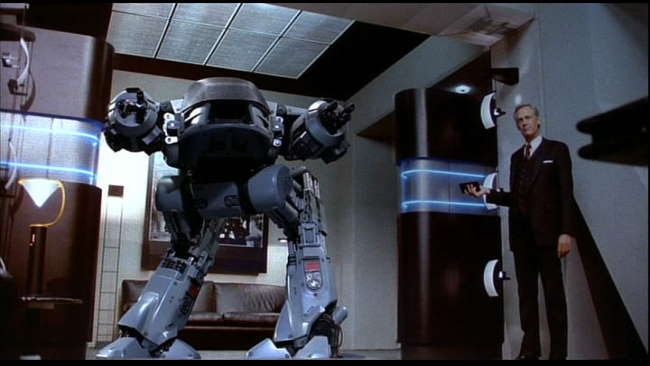
Ted Koppel wrote an OP-ED for the New York Times earlier this week entitled “These Guns for Hire.” I would link to the New York Times, but they’ve gone to a pay-per-view model. Luckily, many political bloggers reprint the information - here’s a link to it. In this article, Mr. Koppel discusses a recent trend with respect to privatizing the military:
There is something terribly seductive about the notion of a mercenary army. Perhaps it is the inevitable response of a market economy to a host of seemingly intractable public policy and security problems.
Consider only a partial list of factors that would make a force of latter-day Hessians seem attractive. Among them are these:
*Growing public disenchantment with the war in Iraq;
*The prospect of an endless campaign against global terrorism;
*An over-extended military backed by an exhausted, even depleted force of reservists and National Guardsmen;
*The unwillingness or inability of the United Nations or other multinational organizations to dispatch adequate forces to deal quickly with hideous, large-scale atrocities (see Darfur and Congo);
*The expansion of American corporations into more remote, fractious and potentially hostile settings.
Just as the all-volunteer military relieved the government of much of the political pressure that had accompanied the draft, so a rent-a-force, harnessing the privilege of every putative warrior to hire himself out for more than he could ever make in the direct service of Uncle Sam, might relieve us of an array of current political pressures.
In the Op-Ed Koppel does a nice job of exposing the issues with having privatized firms maintain their own mercenary force. There is clearly a conflict of interest between a country’s interest (The US in this case) and a corporation’s concerns.
So, if there are personnel shortages in the military (and with units in their second and third rotations into Iraq and Afghanistan, there are), then what’s wrong with having civilian contractors? Expense is a possible issue; but a resumption of the draft would be significantly more controversial.
Moreover, contractors provide the bodyguards (most of them veterans of the American, British, Australian, Nepalese or South African military) and, in some cases, the armored vehicles and even helicopters that have become so necessary for the conduct of business by foreign civilians in Iraq. Such protective services are employed by practically every American news agency and, indeed, are responsible for the security of the American ambassador himself.
So, what about the inevitable next step — a defensive military force paid for directly by the corporations that would most benefit from its protection? If, for example, an insurrection in Nigeria threatens that nation’s ability to export oil (and it does), why not have Chevron or Exxon Mobil underwrite the dispatch of a battalion or two of mercenaries?
This linkage with oil companies is terrific in that watching the CEOs being interviewed about the insanely high oil prices, they flat out say their job is to make money for the shareholders, NOT to keep prices low. In discussing the possibility with a mercenary-for-hire company, the following exchanges took place:
Chris Taylor, the vice president for strategic initiatives and corporate strategy for Blackwater USA, wanted to be sure I understood that such a thing could only happen with the approval of the Nigerian government and at least the tacit understanding of Washington. But could Blackwater provide a couple of battalions under those circumstances? “600 people in a battalion,” he answered. “I could source 1,200 people, yes. There are people all over the world who have honorably served in their military or police organizations. I can go find honorable, vetted people, recruit them, train them to the standard we require.”
What then if the commercial interests of a company or foreign government hiring one of these security contractors comes into conflict with the interests of the United States government? Mr. Taylor of Blackwater doesn’t even concede the possibility. “At the end of the day,” he said, “we consider ourselves responsible to be strategic partners of the U.S. government.” To which he then added, perhaps a little more convincingly: “If we went against U.S. government interests we would never get another contract.”
This last line is the real issue. As long as this is profitable for a corporation, they will support their affiliated government. While I certainly don’t believe that lifetime soldiers of a country would ever go against it in any real numbers, this is a global economy - mercenaries can be outsourced. Corporations are multi-national. If there EVER was a REALY BAD idea that has been floated around recently, this is it. Talk about the start to a cyberpunked future! If the trend moves towards corporate control of our protection, we truly will be on a dystopic path.
This post has been filed under Cyberpunked living by SFAM.

Ghost in the Shell: Stand Alone Complex (GITS SAC) is about to be released as a novel. Dark Horse Comics has the publish date slated for two days from now (May 24th). Originally, this was supposed to be released a month or two ago. Dark Horse’s description for GITS SAC is as follows:
In the not-too-distant future of 2032, the frontier dividing humans and machines has been crossed. Crimes comitted by flesh-and-metal cyborgs are investigated by Section 9, an elite counter-terrorist squad run by Chief Aramaki and his cyborg assistant, Major Motoko Kusanagi. Section 9 has faced countless adversaries in the real world and in cyberspace, but none like ‘The Awakened.’It is believed that this lethal group of terrorists can take over the minds and bodies of almost anyone. Used as tools to commit crimes against the state, the victims are unaware of who or what is controlling them. When Major Kusanagi captures one of the victims, she hacks into his cyberbrain to learn the ringleader’s identity-what she discovers leads her on a journey deep into the heart of cyberspace, a journey that shakes her to the core.
I’m not quite sure whether the novel will be exploring a Laughing Man variant type story from Season One, or whether this is something completely different. The “Awakened” thing doesn’t ring a bell for me though, so perhaps this is completely different. Also, I’m not sure if the cover above will be used or the more explicit cover floating around. In any event, I’m definitely looking forward to this.

The second volume is currently scheduled to be published on July 19th. Dark Horse’s description for Volume 2 is as follows:
2030 Tokyo: While patrolling Tokyo’s post-World War Three refugee zones Togusa, the newest member of Section 9, discovers that one of the most powerful cyber-criminals his squad has ever faced has plans to kill their leader, Section 9 Chief Daisuke Aramaki, in one of three stories in this collection, and it will take all of the members of Section 9 to stop him. The action heats up in the stories “Double Targets,” “First Love, Last Love,” and “Revenge of the Cold Machines.”
I don’t know whether there will be any artwork in these or not though - I kind of hope so as I love Masume Shirow’s work. I originally had a second paragraph above in the first volume description that seemed to indicate this as such, but in looking at it, it appeared to refer to previous GITS TPBs.
This post has been filed under Graphic Novels by SFAM.
Movie Review By: SFAM
Year: 2003
Directed by: Andy & Larry Wachowski
Written by: Andy & Larry Wachowski
IMDB Reference
Degree of Cyberpunk Visuals: Very High
Correlation to Cyberpunk Themes: High
Key Cast Members:
Neo: Keanu Reeves
Morpheus: Laurence Fishburne
Trinity: Carrie-Anne Moss
Agent Smith: Hugo Weaving
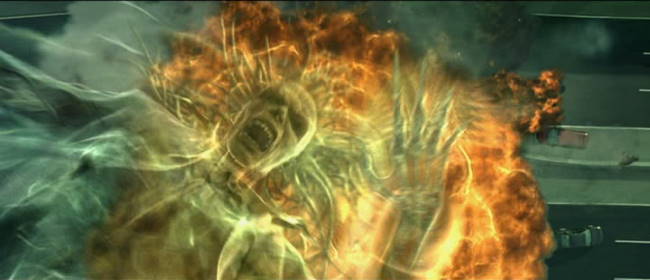
Overview: Matrix Reloaded, one of the most anticipated movies of 2003 provides a very interesting follow-up to one of the best, most influential movies in cyberpunk and all of Sci-Fi. Many have knocked this (and Revolutions more) for being a significant step down from the original movie, and to an extent they are in that the “newness” of the idea has worn off. But truly, it would be absurd to expect the Wachowskis to not use the universe they have already painstakingly created. In this sense, the sequels HAVE to provide a different sensation. In this sense, Reloaded does not disappoint. We get great performances by the Matrix leads, along with a number of truly terrific supporting roles. For this review, I’ll try to concentrate my comments more on the Sci-Fi aspects of the movies versus the religious narrative, as this also covered wonderfully elsewhere. I’ve also tried to use less well known screencaps on the first page of this review. To see some of the more popular Reloaded screencaps, go to page 2 of this review. Also, this review goes in line with my more in-depth assessment of the trilogy from a SciFi perspective:
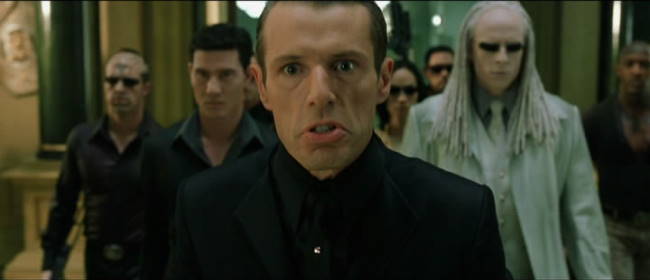
No “The Matrix Sucks/No It’s Great - You Just Don’t Understand!” Debates: Just a fair warning – if youre expecting Matrix sequel bashing, I’m afraid you’ve come to the wrong site. There are numerous places to read such banter if you’re interested. I absolutely love the sequels for a variety of reasons (some of which I explain below), but I really don’t mind in the least if you hate the sequels. Yet, for this movie, I’d really like the comments on this entry to be more related to the movie itself versus whether or not you hate the sequels. Believe me when I tell you I’ve participated in many more hours of discussion on this topic than I ever care to, and absolutely will not get into this in the comments section of this review. If you MUST engage in the “Matrix Sequels Suck/No - They’re Great, You Just Don’t Understand!” debate, please use this thread in the Meatspace.
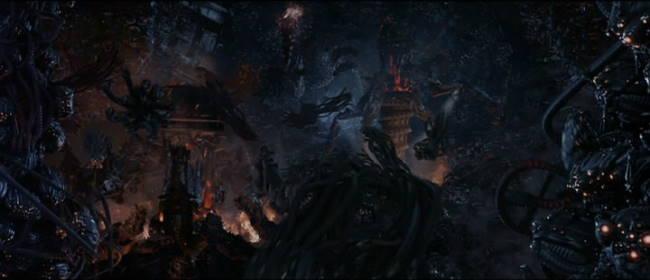
The Story: I’m going to go out on a limb here and guess that about 99.9% of you reading this review have already seen Reloaded, so I won’t spend much time on an overview of the story unless its specifically requested. In brief, Matrix Reloaded is the sequel to the Matrix, and is the second of three movies in the trilogy. In Reloaded, six months have past since the end of the Matrix, during which time, Morpheus, Neo and Trinity have been busting hump freeing massive numbers of battery people. In Reloaded, we get to see Zion, a return of Mr. Smith, and eventually, a fuller understanding of the nature of the Matrix and the Prophecy of the One.
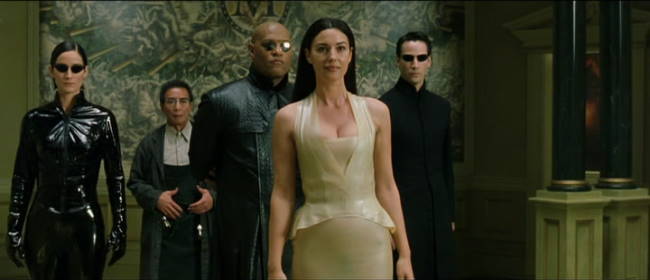
The Supporting Characters: One of the real strong points of Reloaded is the cool character additions. The best ones are of course the Merovingian (played magnificently by Lambert Wilson) and Persephone, played by the ultra-sexy Monica Bellucci in a totally hot see-through dress. When they are onscreen, both absolutely steal the scenes. Almost as terrific is the Architect (Helmut Bakaitis) and the blasé evil ghost twins (Adrian and Neil Rayment – who actually are twins) – they have to be up there as some of the best henchmen ever to grace the screen. Seraph (Collin Chou), Councilor Hamann (Anthony Zerbe), Link (Harold Perrineau), the Keymaker (Randall Duk Kim), and Niobe (Jada Pinkett Smith) all really add to the movie as well.

The Action: Reloaded is filled to the brim with awesome action scenes. In addition to some wonderful Woo-ping Yuen choreographed fights, we get one of the best highway chase scenes ever put on film. The Trinity motorcycle part in particular is just awesome. Truly though, serious credit has to go here to Keanu Reeves’ preparation and training for this film. By all accounts he was an absolute machine in terms of preparation. It really shows on screen. His wire work and martial arts scenes are just terrific (And no, I’m not comparing him to those in Hong Kong who’ve spent an entire career doing this stuff). The CG for the most part is absolutely top notch.

The Visuals: Matrix Reloaded has a lot more diversity in its visuals than the Matrix provided us. We have a few experimental shots like the graphic novel scene of Neo flying with the Moon behind him – and lots of yellows and greens. For yellows, we get rave scenes, explosions, and fights in a yellow weapons room. Greens, of course, still dominate the majority of the scenes – like the first movie, they are omnipresent in most low-light scenes. All in all, the visuals are incredibly diverse and interesting.
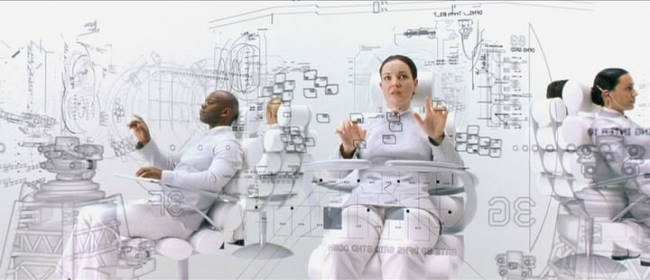
The Pacing: Matrix Reloaded starts off with a bang (literally) before getting into the story. We get a mixture of plot discussions, action sequences and philosophical breaks. But Reloaded is as a whole is definitely of a different style pacing than most movies. It and its sequel more closely resemble the approach taken in Oshii’s Ghost in the Shell, where there are philosophical and thematic discussions that are then played out in the action sequences. The ending clearly comes off as a cliff-hanger, which is to be expected considering this is the middle of a trilogy.
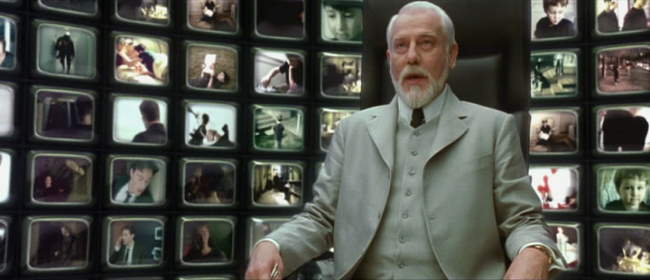
The Architect Conversation: The Architect conversation provides some of the best dialogue of the entire trilogy. This is a philosophical break, a plot buster, and more importantly, the major turning point in the trilogy. The Architect and his minions serve as the ultimate representation of a negative feedback (negating change from an initial goal state) control system. His whole purpose in life is to ensure a steady supply of power (electricity) to the Machine City. As the power is created off the electricity in humans, the Architect must develop a plato cave-like virtual reality simulation that provides humans with a believable reality. The Architect reveals the details of the control system that has kept the machines satiated with electricity for the past 600+ years. In this we find that the prophecy of the One is merely one more layer of control to maintain the status quo to handle the problems arising from freewill (more on this below). Unfortunately, something (or someone) has thrown a monkey wrench into his carefully laid plans. Neo has fallen in love, and in so doing, creates a personal connection with a human that is potentially larger than his overall connection with humanity.
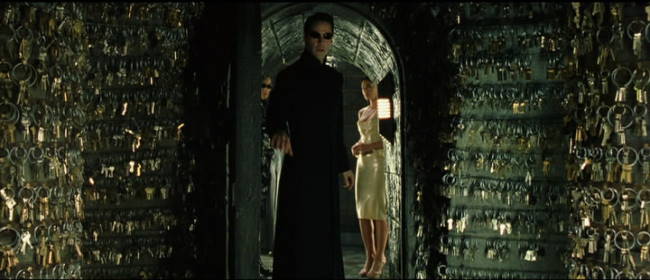
Freewill: Matrix Reloaded spends a good bit of the philosophical breaks discussing the impact of freewill on actions, decision making and on control systems. The Merovingian assets that without the “why,” freewill is merely a facade by those in power that is placed on the powerless. The architect who created the Matrix based on mathematical equations. While he has accounted for almost all anomalies, he had to develop a special periodic subroutine to address the issue of freewill. Because a very small subset of the population would reject the Matrix programming, there needed to be a way of handling this. His approach involves the creation of an external holding bin called “Zion,” which which he would let fill up with the problem battery people, and then every hundred years or so would clean out the holding bin and start again. Simultaneasly, Morpheus, who is unaware of this freewill control subroutine, sees the prophecy of the One as a deterministic journey - one which both reduces the power of freewill while supposedly saving Zion.
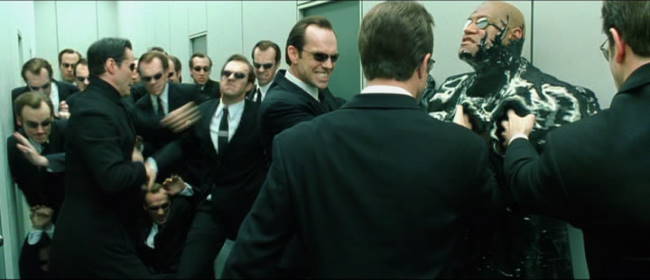
Positive Feedback Out of Control: From a cybernetic standpoint, Positive feedback, or the deviation from an initial goal state, plays a huge role in both reloaded and revolutions. In fact, both movies constitute an emergence and interplay among dueling feedback systems. The architect has created a negative feedback system that has been in force for at least 600 years. Yet now, the perturbations to the negative feedback control system are systemic – in fact, they constitute an initial kick in an entirely new direction. The study of cybernetics tells us that negative feedback systems are destroyed – often never to be repaired to their original state – if the upper or lower threshold values in the are exceeded. For instance, if the body temperature in a human exceeds 106 degrees Fahrenheit, the human will die. In the futuristic dystopia of the Matrix, this is the strategy the Oracle takes. The rationale is that unless the architect’s control system is rendered moot, the “ebony and ivory, living in perfect harmony” future (with machines and humans) the Oracle desires cannot occur.
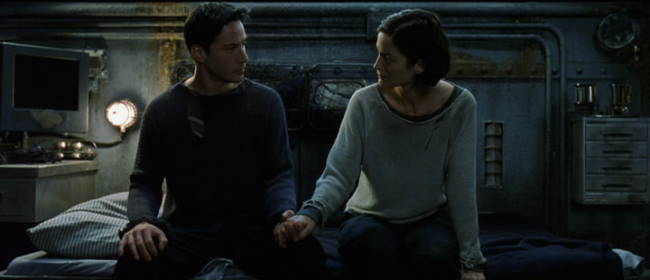
Elements of the positive feedback system, represented in totally by the Oracle and the causality she creates, include both a modification of Neo’s operant conditions and an intrusion into Mr. Smith’s deletion. Neo’s love for Trinity changes the outcome of the Architect’s freewill subroutine – instead of having only one real choice (saving humanity), Neo has a new choice – save trinity now and spend 24 hours trying to rescue Zion and humanity or continue with the control system which will wipe out Zion. Additionally, Mr. Smith has been transformed into a virus. When Neo destroys him in the first movie, Mr. Smith did not disappear – instead (as we find out in Revolutions), the Oracle intervenes and creates the new, viral Smith. While there is no resolution to this in reloaded, the context is set for the resolution in Revolutions.
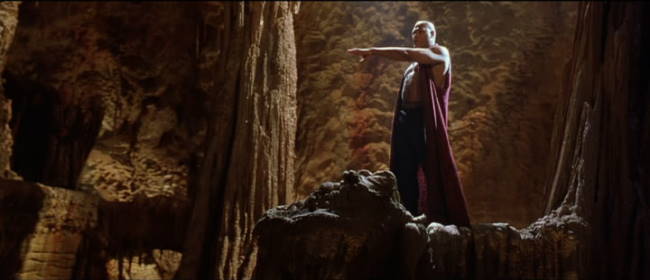
I Believe…: I believe this phrase (“I believe”) is used twenty times or more in Reloaded. There are times it fits perfectly, whereas others it seems to interfere with the dialogue. The scene where Commander Lock is discussing strategy with the Council is the most egregious example of this. Versus “I believe we need every ship…” it would have been far more realistic had he used a simple “We need every ship if we are even to have a chance…” The problem of course is the whole issue of whether or not the Commander and Council believe in the Prophecy of the One. As impending doom draws nearer, the tendency to place faith in supernatural explanations for salvation becomes too great to resist.
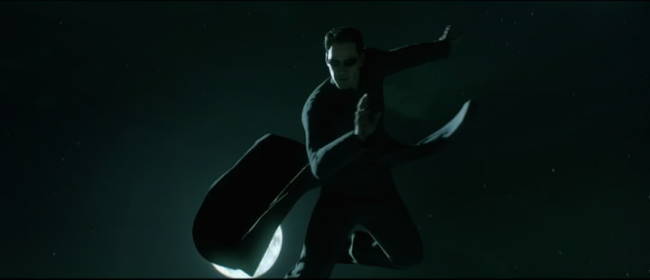
The Bottom Line: The Matrix Reloaded is a terrific follow-up to one of the most influential movies ever. The Wachowski brothers have provided a movie where the action is terrific, the characters are memorable, and the narrative is complex and interesting. Lawrence Fishbourne as Morpheus in particular shines here, which is great, in that is role is significantly diminished in Revolutions. While Reloaded suffers somewhat from being the middle movie in a trilogy, I think it handles this well. The ending provides us with a cliffhanger, which, at the time of release, sparked IMENSE numbers of interesting theories and ideas. I’m guessing most of you have watched Reloaded, so I feel strange giving a plug to watch it. All I can say is I love it.
Page 2: More Screencaps –>
~See movies similar to this one~
Movie Review By: SFAM
Year: 2002
Directed by: Kazuto Nakazawa & Naoyuki Yoshinaga
Written by: Chiaki Konaka
IMDB Reference
Degree of Cyberpunk Visuals: High
Correlation to Cyberpunk Themes: Medium
Key Cast Members:
Basil: Kazuhiko Inoue
Reiko Michaelson: Akemi Okamura
Rod Kimball: Somei Uchida

Overview: Parasite Dolls, another cyberpunk anime written by the prolific cyberpunk anime master, Chiaki Konaka (Serial Experiments Lain, Texhnolyze, Armitage III, Malice@Doll, and Bubblegum Crisis 2040), is a visually interesting, VERY adult OVA from the Bubblegum Crisis universe. The androids (called boomers) in this show are fully android (at least regarding their mental processes) unlike in other Bubblegum stories where they seem to be a combination of human and android. While this is a three part OVA, I really like that they are almost integrated like a movie, versus as separate episodes. Fair warning, you get gruesome deaths in the throws of sex, prostitution, lots and lots of gore.
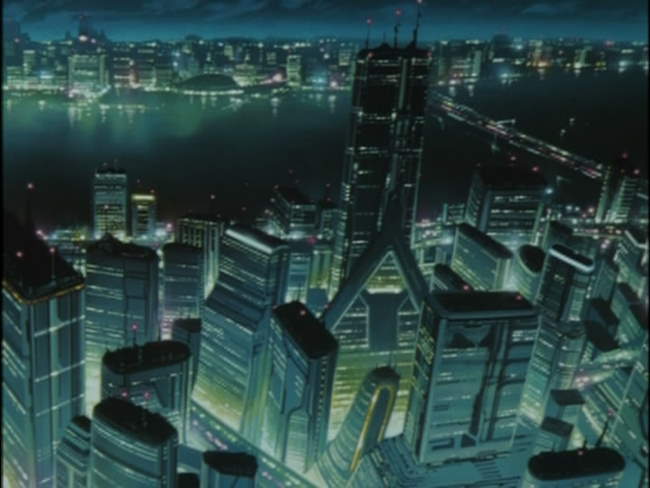
The Stories: There are three separate, interlinked stories on the Parasite Dolls OVA. At the start of the first story, set in the year 2034, where society has become a troubled mix of humans and androids called “Boomers.” The Genom Cooperation has created boomers to serve mankind in all aspects, from police support to sex dolls. Unfortunately, problems emerge, both with the boomers and with humanity’s reaction to their presence. A clandestine division of the Advanced Police (A.D Police) called “Branch” has been created to investigate human to boomer related crimes. The story follows “Buzz” Nikvest, a policeman with a troubled past, and his partners at the Branch division, which include a very helpful Boomer called Kimball and a stereotyped spunky, sexy, tough cop chick named Reiko Michaelson.
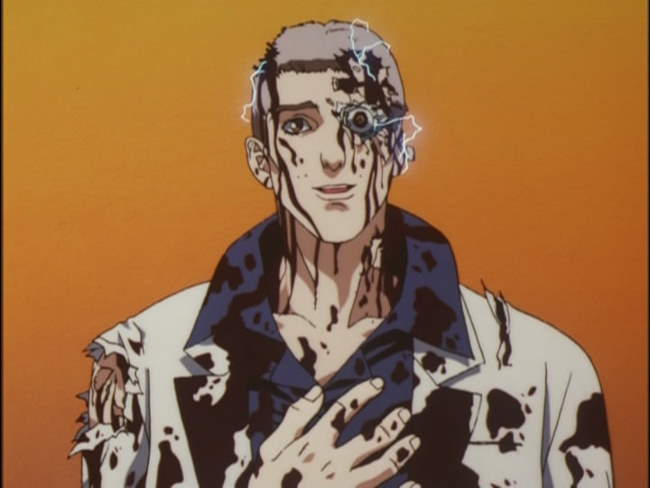
In the first episode, rogue boomers start randomly attacking and killing innocent humans. Buzz and company are brought in to investigate. During the course of their investigation, they find that things at the Genom corporation are not all above board. This story has some pretty cool visuals of shot-up boomers, and a few interesting

The second episode, which takes place a year later, involves a truly bizarre android monster called the “Boomer Crusher” and a very lifelike boomer prostitute who has feelings and has dreams. Unfortunately, the prostitute is being controlled in her dreams to cause some truly bizarre human deaths. We find out more in the third story of who probably created this monster, but it isn’t really stated in the narrative.
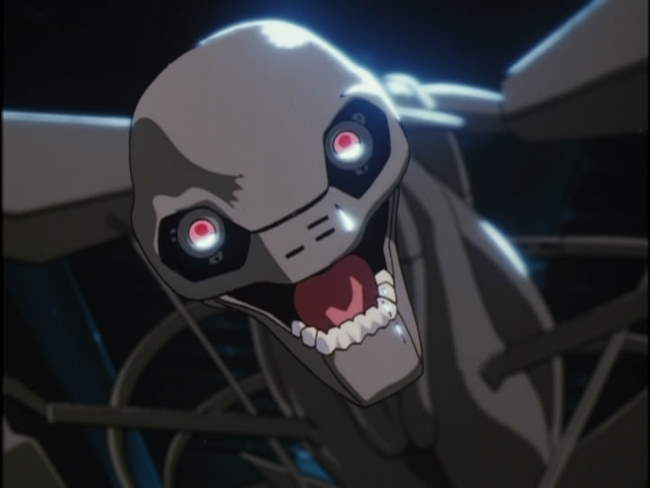
In the third episode, which takes place 5 years later, Takahashi, the head of Branch Division is missing. In searching for their missing box, Buzz, Kimball and Reiko find a connection between Takahashi’s disappearance and the recent spate of anti-boomer activity that has grown in recent years. Worse, as explosions go off all over the city, Buzz is framed as the fall guy. As the story unfolds, the viewer is left with the idea that all three stories are related to the same larger plot.
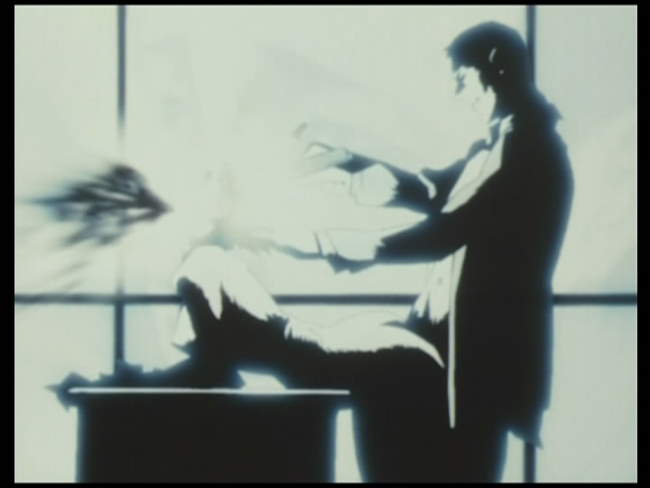
The Visuals: Parasite Dolls has a really nice diversity of looks, often emphasizing extreme shadows in single color light settings. Both blue and gray are used extensively for this, often yielding terrific visuals. In other cases, Parasite Dolls looks like a rather decent, but not spectacular anime. It does best when it strives for the edgy look. Had this been used throughout, Parasite Dolls could have come off as something bordering on special. As it stands, some parts really stand out, while others you almost wait to get through.

Boomers – property or unique individuals: Nothing new here – Parasite Dolls explores the continually explored question of whether androids are merely property or something more unique. Unfortunately, no new ground is traversed. Instead, the interesting aspects of this come from the seedy visuals themselves. There are a few scenes in Parasite Dolls where the visuals make a far more interesting statement than the narrative. These usually involve truly gruesome Boomer deaths.
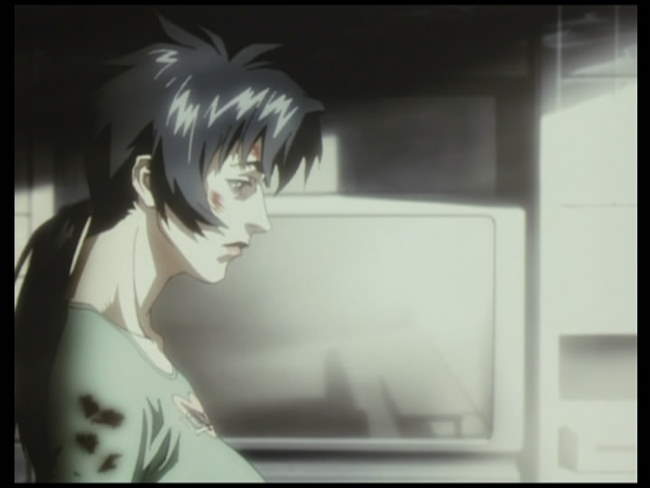
The Seedy Underground: A seedy feeling pervades Parasite Dolls. We get nudie bars, slovenly side-walks, seedy corporate meetings, and absolutely base human behavior. We have hot chick boomers continually debased and abused. Even the weird creatures that appear have an icky feel to them. The constant theme we see here are fallen boomers. They had so much potential, but…

The Bottom Line: The stories themselves are somewhat uneven and problematic, but the visuals are interesting enough to make this worth a watch. While the narrative is more straight forward than many of Chiaki Konaka’s stories, it does require a few minutes thought to put the overall picture together – otherwise, all three episodes almost seem disconnection. Even though Buzz is a pretty interesting character, the rest of the characters we encounter are pretty much the cookie-cutter variety. Worse, as the episodes take place over a six-year time period, you would really expect to see growth in the characters, or at least changes in the nature of their relationships. Instead, the characters we encounter at the beginning are the same ones six years later. Still, for a 3 part OVA, Parasite Dolls is worth a watch for the visuals alone.
~See movies similar to this one~
WordPress database error: [You have an error in your SQL syntax; check the manual that corresponds to your MySQL server version for the right syntax to use near '' at line 1]
SELECT COUNT(ID) FROM
|














































